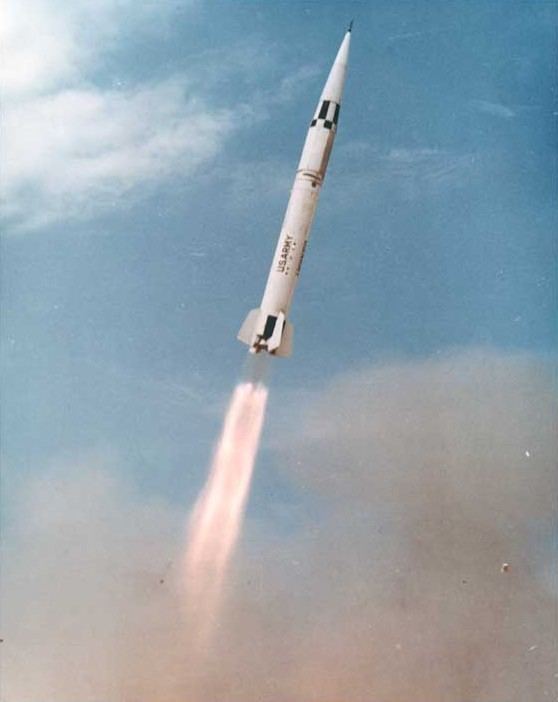Designed 1955 | In service 1962-1979 | |
 | ||
Used by United States ArmyGerman Army Designer | ||
The MGM-29 Sergeant was an American short-range, solid fuel, surface-to-surface missile developed at the Jet Propulsion Laboratory. The missiles were built by Sperry Utah Company.
Activated by the US Army in 1962 to replace the MGM-5 Corporal, it was deployed in Europe and South Korea by 1963, carrying the W52 (M65) nuclear warhead or alternatively one of high explosives. A biological warhead, the M210, was standardized but not procured, and there was also a chemical variant, the M212 which had not attained standardization. It was replaced by the MGM-52 Lance and the last US Army battalion was deactivated in 1977. Sergeant Missile Systems were usually assigned to the field army with the mission of "general support to a corps"
Operation of the Sergeant was recognized to be an interim stage in the development of battlefield missiles. It avoided the Corporal's liquid-fuel-handling drawbacks, but still requiring extensive setup and checkout before launch, together with a train of semi-trailer support vehicles. More advanced missiles, such as the contemporary Blue Water and later Lance, would reduce setup time.
The Sergeant had a takeoff thrust of 200 kilonewtons (45,000 lbf), a takeoff weight of 4,530 kilograms (9,990 lb), a diameter of 790 millimetres (31 in), a length of 10.52 metres (34.5 ft) and a fin span of 1.80 metres (5 ft 11 in). The Sergeant missile had a minimum range of 40 kilometres (25 mi), and a maximum range of 135 kilometres (84 mi).
The Sergeant was used as the second stage of the Scout satellite launcher, and clusters of Sergeant-derived rockets were used in the second and third stages of the Jupiter-C sounding rocket and used in the second, third, and fourth stages of the Juno I and Juno II launch vehicles.
Thiokol developed the Sergeant rocket motors—and the Castor rocket stages derived from them—at the Redstone Arsenal near Huntsville, Alabama.
Operators
West Germany German Army
United States United States Army
